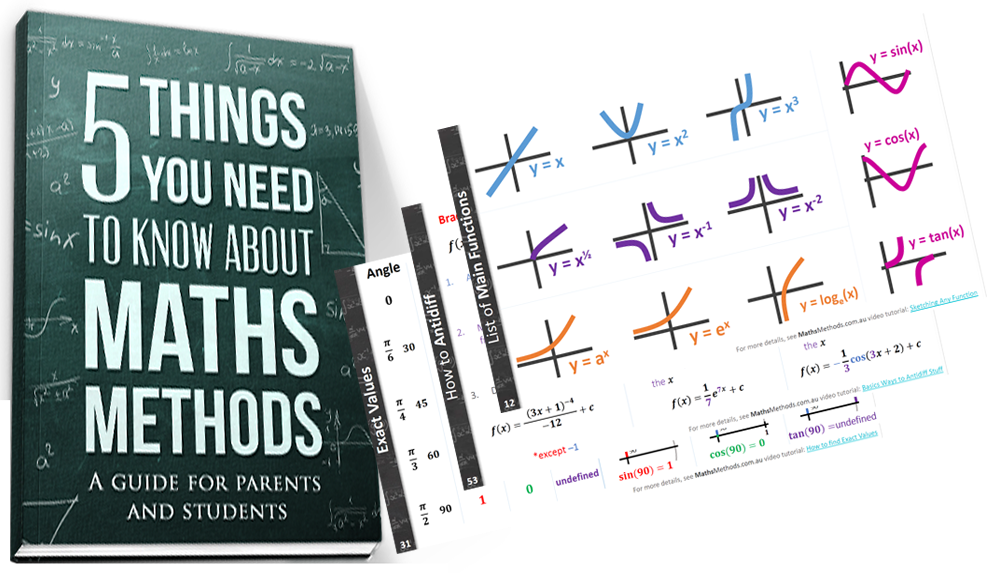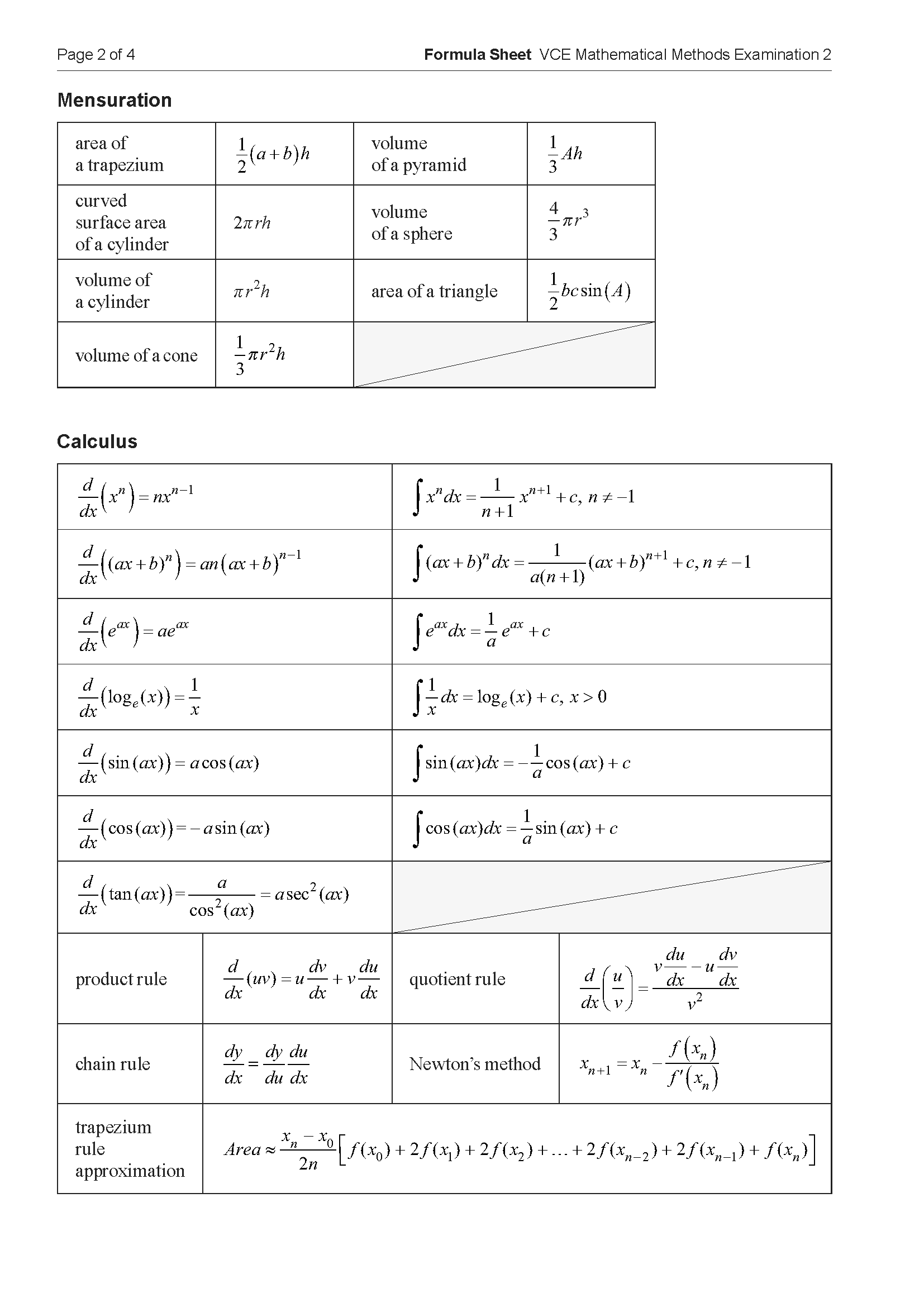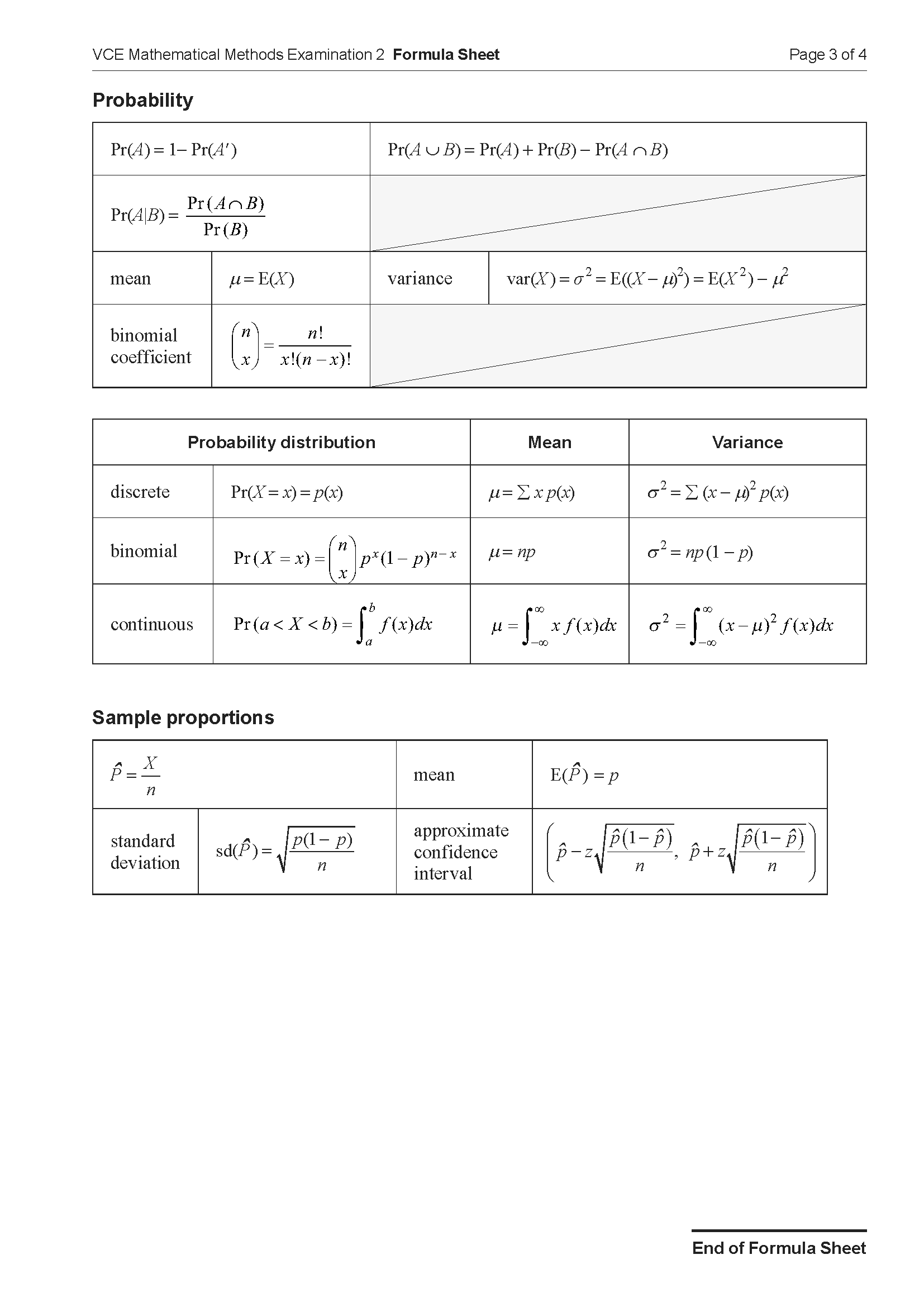VCE Methods Probability Application Task 3
Number of marks: 15
Reading time: 3 minutes
Writing time: 22 minutes
Section B – Calculator Allowed
Instructions
• Answer all questions in the spaces provided.
• Write your responses in English.
• In questions where a numerical answer is required, an exact value must be given unless otherwise specified.
• In questions where more than one mark is available, appropriate working must be shown.
• Unless otherwise indicated, the diagrams in this book are not drawn to scale.
A manufacturer produces tennis balls. The diameter of the tennis balls is a normally distributed random variable \( D \), which has a mean of 6.7 cm and a standard deviation of 0.1 cm.
a. Find \( \Pr(D > 6.8) \), correct to four decimal places. 1 mark
b. Find the minimum diameter of a tennis ball that is larger than 90% of all tennis balls produced. Give your answer in centimetres, correct to two decimal places. 1 mark
Tennis balls are packed and sold in cylindrical containers. A tennis ball can fit through the opening at the top of the container if its diameter is smaller than 6.95 cm.
c. Find the probability that a randomly selected tennis ball can fit through the opening at the top of the container. Give your answer correct to four decimal places. 1 mark
d. In a random selection of 4 tennis balls, find the probability that at least 3 balls can fit through the opening at the top of the container. Give your answer correct to four decimal places. 2 marks
A tennis ball is classed as grade A if its diameter is between 6.54 cm and 6.86 cm, otherwise it is classed as grade B.
e. Given that a tennis ball can fit through the opening at the top of the container, find the probability that it is classed as grade A. Give your answer correct to four decimal places. 2 marks
f. The manufacturer would like to improve processes to ensure that more than 99% of all tennis balls produced are classed as grade A. Assuming that the mean diameter of the tennis balls remains the same, find the required standard deviation of the diameter, in centimetres, correct to two decimal places. 2 marks
g. An inspector takes a random sample of 32 tennis balls from the manufacturer and determines a confidence interval for the population proportion of grade A balls produced. The confidence interval is (0.7382, 0.9493), correct to 4 decimal places.
Find the level of confidence that the population proportion of grade A balls is within the interval, as a percentage correct to the nearest integer. 2 marks
A tennis coach uses both grade A and grade B balls. The serving speed, in metres per second, of a grade A ball is a continuous random variable, \( V \), with the probability density function
\[ f(v) = \begin{cases} \frac{1}{6\pi} \sin\left( \sqrt{\frac{v - 30}{3}} \right), & 30 \leq v \leq 3\pi^2 + 30 \\ 0, & \text{elsewhere} \end{cases} \]
h. Find the probability that the serving speed of a grade A ball exceeds 50 metres per second. Give your answer correct to four decimal places. 1 mark
i. Find the exact mean serving speed for grade A balls, in metres per second. 1 mark
The serving speed of a grade B ball is given by a continuous random variable, \( W \), with the probability density function \( g(w) \).
A transformation maps the graph of \( f \) to the graph of \( g \), where
\[ g(w) = af\left(\frac{w}{b}\right) \]
j. If the mean serving speed for a grade B ball is \( 2\pi^2 + 8 \) metres per second, find the values of \( a \) and \( b \). 2 marks
End of examination questions
VCE is a registered trademark of the VCAA. The VCAA does not endorse or make any warranties regarding this study resource. Past VCE exams and related content can be accessed directly at www.vcaa.vic.edu.au


